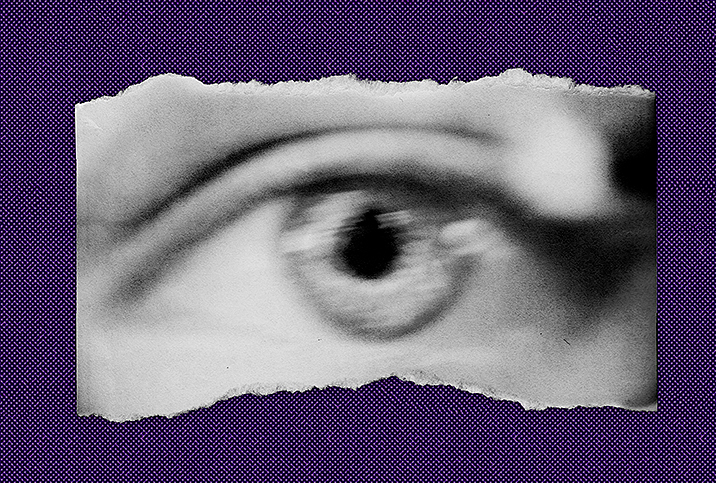Living With PTSD

Post-traumatic stress disorder (PTSD) is a psychiatric disorder that can occur in people who have witnessed or experienced terrifying events. Millions of people in the United States suffer from PTSD, and it can impact nearly every aspect of their lives.
Although most people who experience a traumatic event can cope and get better with time and self-care, PTSD symptoms sometimes worsen and can last for years or even a lifetime. Living with PTSD can put a strain on your relationships, make life at work difficult and cause negative consequences in your sex life. Getting care for PTSD from a healthcare provider or therapist is the first step toward recovering your quality of life.
What is PTSD and what causes it?
Post-traumatic stress disorder is a condition caused by witnessing, experiencing or having someone you love experience a terrifying or dangerous event. While PTSD discussions often revolve around how it affects soldiers returning from war—in the past, it was dubbed shell shock—PTSD occurs more frequently among the citizen population than most people would like to think. It's so common that up to 8 percent of Americans will be diagnosed with PTSD at some point in their lives.
Anyone can develop PTSD from an event involving actual or threatened death, violence or sexual assault. However, although a single traumatic event can trigger PTSD, like most mental health issues, PTSD is caused by a mix of factors that are difficult to pinpoint.
Common causes of PTSD include:
- The amount of trauma experienced
- Temperament or personality
- History of mental health risks, such as family members with depression
- The mode in which an individual's brain regulates the hormones released by the body when responding to stress
PTSD can affect anybody—no matter their age, occupation, race or nationality. It's essential if you or a loved one suspect you have PTSD that you contact a healthcare specialist and seek treatment as soon as possible. Don't let symptoms worsen before finding help.
Understanding the symptoms of PTSD
The symptoms of PTSD do not always appear immediately after a traumatic event. In fact, it can take months or years for symptoms to present, which can make diagnosis difficult.
Symptoms of PTSD are grouped into four categories: avoidance, alterations in cognition or mood, changes in physical reactions and arousal, and intrusive memories:
- Avoidance: You avoid talking or thinking about the traumatic event, or avoid activities, locations, people or situations that remind you of the event. You may also unknowingly forget certain details of the event.
- Alterations in cognition or mood: You may experience negative thoughts about yourself and the world, a sense of hopelessness or detachment, and a lack of desire to do activities you used to enjoy. Positive emotions, feelings and thoughts may be difficult to come by, and memory problems may occur.
- Changes in physical reactions and arousal: You may be easily frightened, constantly on the lookout for danger, have trouble concentrating and sleeping, be consumed by guilt, become angry or irritated suddenly, or begin to engage in self-destructive and impulsive behaviors such as drug use, drinking or speeding.
- Intrusive memories: You may suffer flashbacks, distressing nightmares or recurring, uncontrollable memories of the traumatic event. It's also possible to be emotionally distressed or have physical reactions to reminders of the event.
While the symptoms of PTSD can be experienced by anyone exposed to a traumatic event, for a diagnosis of PTSD, your symptoms must persist for at least a month after the exposure and seriously hinder your ability to function daily. Symptoms of PTSD can vary for individuals, and a qualified healthcare professional must be consulted to diagnose PTSD accurately.
The daily struggles of living with PTSD
Living with PTSD can make life incredibly difficult for you and your family. People who have PTSD often experience related conditions such as substance use, memory issues, depression and other mental health problems. Even basic daily tasks like grocery shopping or going to the movies can cause anxiety and feel overwhelming.
The areas of life most affected by PTSD include:
- Relationships: PTSD can cause symptoms that may strain any type of relationship. People who have PTSD often feel misunderstood or like they're weighing others down. Caregivers for people with PTSD can burn out and become frustrated and exhausted. This means relationships with family, friends and spouses can suffer when you have PTSD.
- Work life: When you can't sleep, have difficulty concentrating and are constantly on edge, it becomes tough to be consistent at work. People with PTSD often lose their jobs because they become too difficult to manage. If a traumatic event happened at work, sometimes people change careers to avoid reminders.
- Housing: Since PTSD makes working more challenging, paying the monthly rent or mortgage can be difficult, as well. Untreated PTSD leads to higher-than-average rates of homelessness. People who are ashamed of their PTSD and do not seek treatment often turn to drugs and alcohol or isolate themselves from friends and family.
- Worldview: People who have PTSD can have negative thoughts about themselves and the world. In the worst cases, people can lose their will to live and become suicidal.
How PTSD can affect sexual health
PTSD is an anxiety disorder that negatively affects emotional, mental and physical health, including sexual health.
A 2015 study in the Journal of Sexual Medicine indicated PTSD may contribute to the development of sexual dysfunction. This link is further supported by other studies conducted on veterans with PTSD: One survey of 90 male combat veterans found that more than 80 percent experienced sexual dysfunction.
Although the link between PTSD and sexual health is not surprising, the apparent high rate of sexual dysfunction among PTSD populations may be surprising to some people. If PTSD and its symptoms begin to negatively affect your relationships and love life, contact a licensed therapist to discuss your problem.
Management and treatment for PTSD
People who have PTSD often blame themselves, which can lead to further depression and, in some instances, suicidal thoughts and behaviors. A therapist will help you understand that PTSD is not your fault and identify specific symptoms and ways you can cope with them. An experienced therapist can help you work toward healing and moving on with your life.
Treating PTSD is most often done with cognitive behavior therapy (CBT). The goal of CBT is to help you identify and change the thought patterns associated with PTSD. There are many different types of CBT, but some of the most common and successful therapies include:
- Cognitive processing therapy (CPT): In this 12-week course of treatment, you will discuss the traumatic event with your therapist and how it's affecting you. Afterward, you will write in detail about the event, examine your thoughts and feelings associated with it, and consider how you can move forward.
- Prolonged exposure therapy (PET): This therapy can help you confront aspects of the event that you've been avoiding. You will learn breathing techniques to cope with anxiety, make lists of activities or places you're avoiding, and make plans on how to face them. Then you'll recount the traumatic event to your therapist in a recording and listen to the audio at home. The idea of PET is to diminish your symptoms by confronting the reality of the event.
- Stress inoculation training (SIT): This form of CBT is less focused on going into the details of the traumatic event than on how you manage any related stress and anxiety. In SIT, you will learn about massage, breathing techniques for calming your body and mind, and other strategies to relieve stress.
- Eye movement desensitization and reprocessing (EMDR): This nontraditional form of psychotherapy is intended to diminish the negative feelings associated with a traumatic event. EMDR focuses primarily on the emotions and symptoms caused by the event, and less on the event itself.
Although medications don't erase symptoms completely, for some people who have PTSD, medicines can make symptoms more manageable by reducing flashbacks, improving sleep and helping them achieve a more optimistic outlook on life.
People with PTSD often have alarming levels of fear and anxiety, which keep them on edge and throw off the balance of neurotransmitters in their brain. That's why medications that affect the neurotransmitters serotonin and norepinephrine are often prescribed to people with PTSD.
Some of the most common medicines prescribed for PTSD include venlafaxine (Effexor), sertraline (Zoloft), paroxetine (Paxil) and fluoxetine (Prozac). Doctors often prescribe other drugs, such as antidepressants, antipsychotics and anxiolytics, to mitigate symptoms. Everyone is affected differently by PTSD, so finding the right medications or combination of meds can take time and involve some trial and error.
Contact a PTSD therapist or healthcare professional
Living with post-traumatic stress disorder can make daily life incredibly difficult for you and your family. Without professional help, routine tasks, going to work and getting a good night's sleep can become seemingly impossible.
If you or a loved one has PTSD, don't hesitate to contact an experienced therapist or healthcare professional in your area. Therapists are trained to teach you how to cope with anxiety, restore relationships with your friends and family, and find techniques to decrease the intensity of symptoms. PTSD is no one's fault, and nobody should have to suffer through it alone.
If your PTSD is spiraling out of control to the point of experiencing negative or suicidal thoughts, call 1-800-273-8255 for the National Suicide Prevention Lifeline and seek help from a medical professional for proper treatment.


















